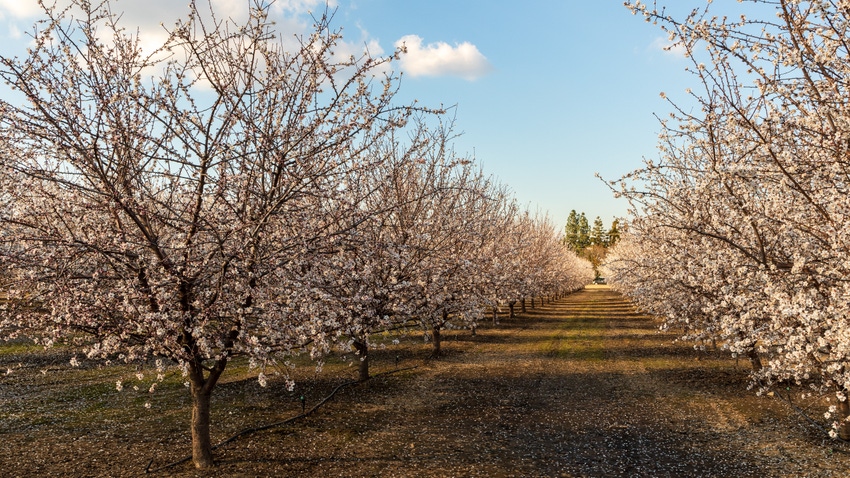
It’s beginning to look a lot like … spring.
The annual ritual of daylight savings in most states is being accompanied by a dramatic change in the weather pattern this week, as a couple of days of strong winds will sweep away the clouds and bring temperatures in the 70s in California’s Central Valley.
The wind event will begin tonight (March 13) and last through Friday morning, according to the National Weather Service in Sacramento. Wind gusts Thursday could top 70 mph in the Sierras south of Interstate 80 while causing downed tree limbs, weakened trees and localized power outages in the valley, the weather service warns.
“The strongest wind during this event will be in the mountains above 4,000 feet,” NWS warning coordinator Courtney Carpenter said in a video briefing. “Because we’ve been so wet … we’re not expecting the kind of fire weather concerns we’d normally see in a northerly wind event.”
After that, temperatures this weekend will vault into the 70s in the Central Valley and Oregon’s Willamette Valley, and most of the West will see balmy conditions (relatively speaking) by Monday, March 18, from the low 60s in Montana to the 80s in Arizona.
And while more precipitation could appear in the coming weeks, forecasts suggest the most severe of the winter storms could be over. The federal Climate Prediction Center expects the western U.S. to be warm and dry over the next 14 days, and long-range forecasters are saying the shift away from El Nino will likely lead to a warmer-than-average spring in much of the country.
Relief for farm work
The break in the weather could bring relief to growers who’ve been dodging raindrops as they proceed with winter harvests and field work. In California, winter storms delayed harvests of some vegetables and many citrus fruits, leading to larger fruit sizes, and bees were placed in almond orchards between rainstorms, the USDA’s National Agricultural Statistics Service reported.
In other states, according to NASS:
Colorado’s drought conditions improved with recent storms and livestock remained in good condition, with calving and lambing starting off well, but winter wheat condition declined.
Precipitation in Oregon has interfered with field work in some areas in February, but the wheat crop emerged and was in good condition, with no signs of stripe rust.
Utah’s above-average snowpack was leaving some winter wheat susceptible to snow mold.
Amid a relatively warm and dry February in Washington, significant progress was made in pruning orchards and vineyards, with some orchard removal.
Drought conditions slightly improved in Wyoming in February, although the majority of the state is still in drought.
The weather change should be a boon for the Northwest Ag Show in Salem, Ore., which was rescheduled for this week after fierce snowstorms in January caused its postponement. The 54th show today and Thursday at the Oregon State Fair and Expo Center will be greeted by clearing skies and highs of 50 degrees and 60 degrees, respectively, according to the weather service.
Flood risk low
With the move into warmer spring weather, concerns may shift to the threat of flooding from spring runoff, but the NWS asserts the threat is “fairly low” in California even though the statewide snowpack was 104% of normal as of March 12, according to the state Department of Water Resources.
In California, the areas with the highest risk of snowmelt flooding are in mountainous areas of the Cascades and the Sierra Nevada, according to the weather service. In far Northern California, the snowpack is 117% of normal.
About the Author(s)
You May Also Like






